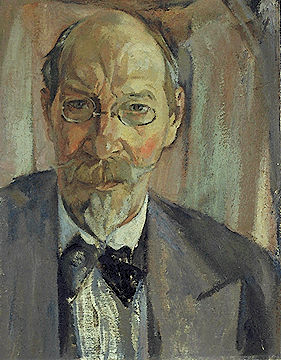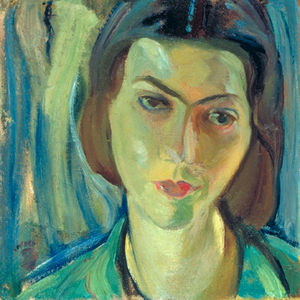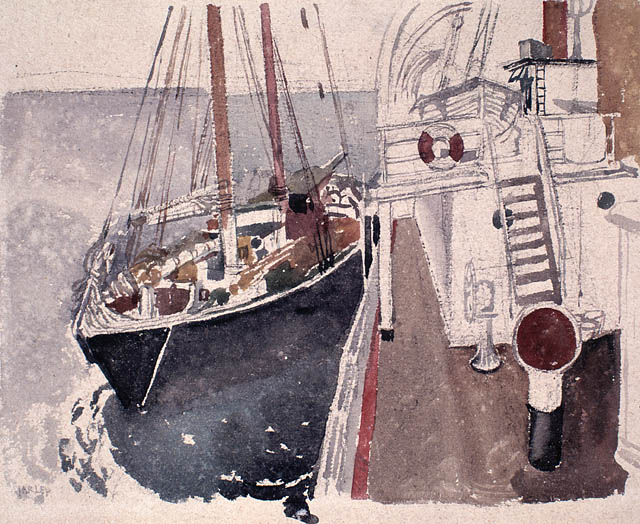Frederick Horsman Varley, painter (born 2 January 1881 in Sheffield, England; died 8 September 1969 in Toronto, Ontario). Varley was a founding member of the Group of Seven (also known as the Algonquin School), a Canadian group of landscape painters. He was also an official war artist during the First World War. Romantic and independent, Varley was known as the "gypsy" of the Group of Seven. His gifts as a colourist, draftsman and intimate observer of life are best displayed in both his drawings and small watercolours.
Early Life and Career
In early life, Frederick Horsman Varley spent much time in the English countryside and became intensely spiritual, finding God in nature, not in the church. He received a solid art education, first at the Sheffield School of Art (1892–1900), then the Académie royale des beaux-arts in Antwerp, Belgium (1900–02), where he studied original paintings by Rubens.
After unsuccessful starts at careers as an illustrator and art teacher in England, Varley immigrated to Canada in 1912. Through Arthur Lismer, a Sheffield friend who had moved to Canada a year earlier, he found employment as a commercial illustrator in Toronto and befriended Tom Thomson and Frank Carmichael.
First World War
On 7 February 1918, Frederick Horsman Varley joined the Canadian Expeditionary Force as honorary captain, “for purpose of painting war pictures.” Varley was commissioned as a war artist through the Canadian War Memorials Fund, an outgrowth of the Canadian War Records Office. (See Canadian War Art Programs.) The official war art program employed more than 100 artists (about a third of them Canadian) and produced approximately 1,000 works of art. Among the artists were two other future members of the Group of Seven: A.Y. Jackson and Arthur Lismer. Varley painted several portraits in England and made two trips to France. The four large war scenes that resulted (The Sunken Road, Someday the People Will Return, German Prisoners and For What?) were critically acclaimed and brought him to the forefront of painters in Canada.
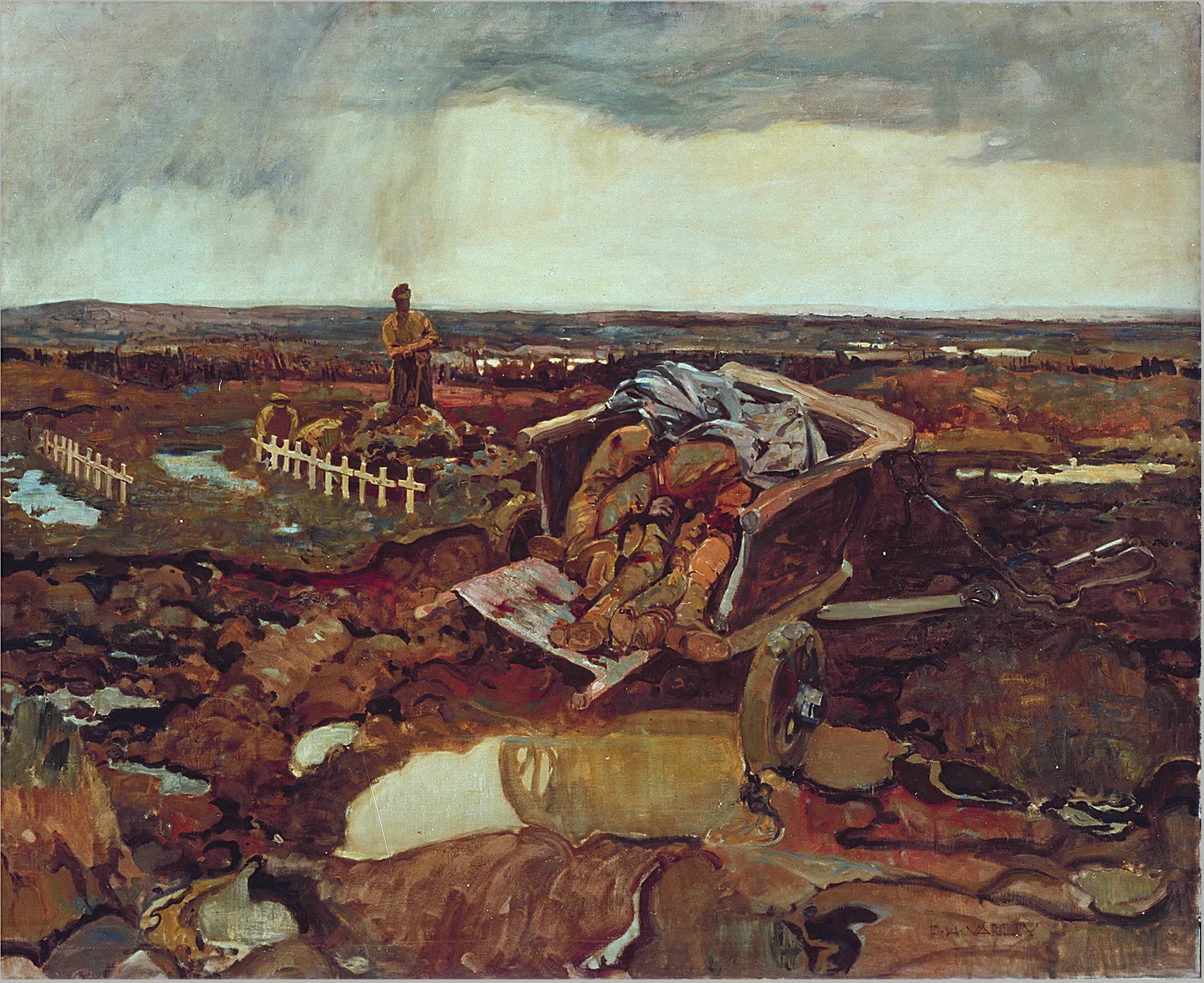
Group of Seven
In May 1920, Varley became a founding member of the Group of Seven, a group of Canadian landscape artists that disbanded in 1933. One of his best-known works, Stormy Weather, Georgian Bay (1921), was painted soon after. Unlike the rest of the Group, though, Varley was primarily interested in the figure. During the early 1920s, he attempted to make a living as a portraitist. The family of Vincent Massey commissioned several, but Varley made little money and in 1926 began to teach at the Vancouver School of Decorative and Applied Arts.
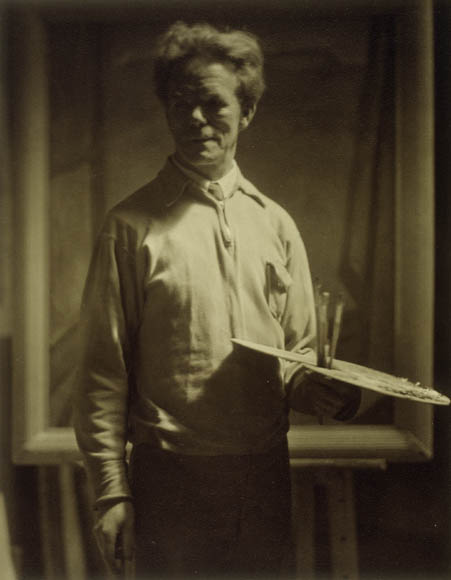
Later Career
During the next 10 years, Frederick Horsman Varley painted hundreds of landscapes in oil and watercolour, marked by fine draftsmanship, exotic colour, unusual vantage points, and, after 1933, by metamorphosis of forms. In 1933, he and J.W.G. MacDonald opened their own school, the BC College of Arts. Though it was well attended, it closed after two years, a victim of the Depression. By 1936, Varley was broke, and he moved to Ottawa to try to resume his career as a portraitist. During the next nine years, he drifted between Ottawa and Montreal, making few paintings, except in 1938, when he travelled to the Arctic on the government supply ship RMS Nascopie (see Arctic Eastern Patrol).
In 1944, Varley returned to Toronto and, in 1948-49, he taught at the Doon Summer School of Fine Arts near Kitchener. In 1955, he made a sketching trip to Cape Breton, and in 1957, the first of several more painting trips to British Columbia.
Varley died in September 1969 in Toronto. He is buried in the grounds of the McMichael Canadian Art Collection in Kleinburg, Ontario, alongside other members of the Group of Seven.

 Share on Facebook
Share on Facebook Share on X
Share on X Share by Email
Share by Email Share on Google Classroom
Share on Google Classroom

